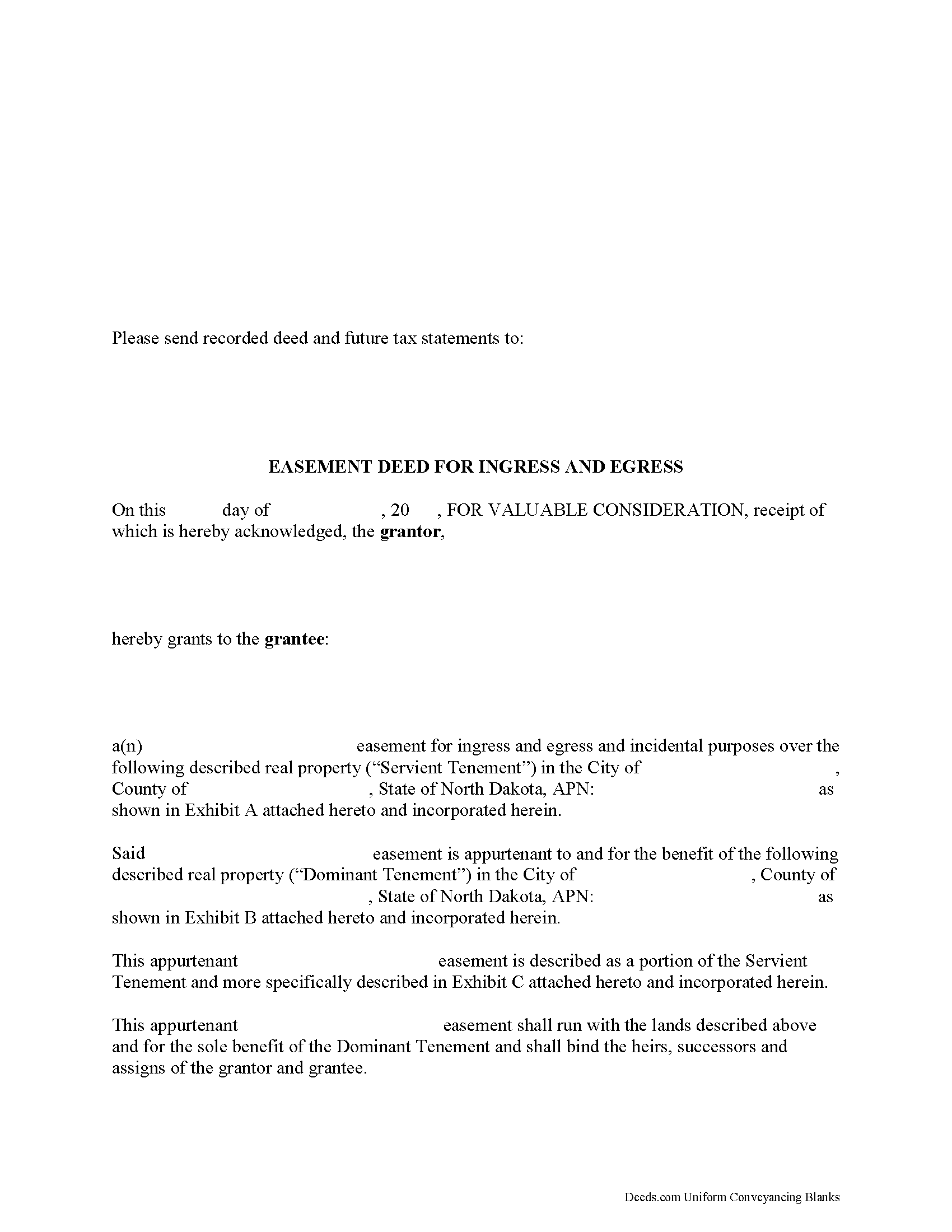Download North Dakota Easement Deed Legal Forms

North Dakota Easement Deed Overview

An easement allows one person to use another person's real property for a specific purpose. Section 47-05-01 of the North Dakota Century Code lists land servitudes or burdens which may be attached to other land as incidents or appurtenances, which are then called easements. Some land burdens or incidents upon land, such as the right of pasture and of fishing, the right of way, and the right of taking water, wood, or minerals, may be granted and held, though not attached to land (47-05-02). The easement deed should properly describe the area of land covered by an easement and by the interest in real property, as well as the duration of the easement (47-05-02.1). A servitude or easement can be created by one who has a vested estate in the servient tenement (47-05-05). A transfer of real estate in North Dakota will pass all the easements attached to the land (47-10-11).
As an interest in real property, an easement deed must contain the original signature of the grantor, which must also be acknowledged, in order to be presented for recording (47-19-03). If the deed has not been acknowledged, it can be proved by a subscribing witness, which will entitle it to be recorded (47-10-05). An easement deed can be proved or acknowledged at any place in North Dakota before a judge or clerk of the Supreme Court or a notary public (47-19-13). Some officers, such as a city mayor, a recorder, or a county auditor, may take proof or acknowledgments of a deed only within their own district (47-19-14). The officer taking proof or acknowledgment of an easement deed must endorse or attach a certificate to the deed, which should be in substantially the same form as provided in 47-19-27 of the North Dakota Century Code. If an easement deed is acknowledged out of state, it will be accepted for recording in North Dakota if it has been acknowledged according to the laws of such state (47-19-35).
Any instrument, such as an easement deed, affecting the title to or possession of real property in North Dakota must be recorded in the county where the property subject to the easement is located. A duly signed and acknowledged easement deed can be recorded in order to provide constructive notice of the contents of the instrument (47-19-19). If the deed is not recorded, it will be valid between the parties thereto and those who have notice of the instrument (47-19-46). An unrecorded easement deed will also be void against a subsequent purchaser in good faith, and for a valuable consideration, of the same real estate or portion thereof, whose conveyance is first submitted to the recorder and subsequently recorded, whether such instrument is entitled to be recorded or not, or as against any attachment levied thereon or any judgment lawfully obtained at the suit of any party, against the person in whose name the title to such land appears of record, prior to the recording of such conveyance (47-19-41).
(North Dakota ED Package includes form, guidelines, and completed example)